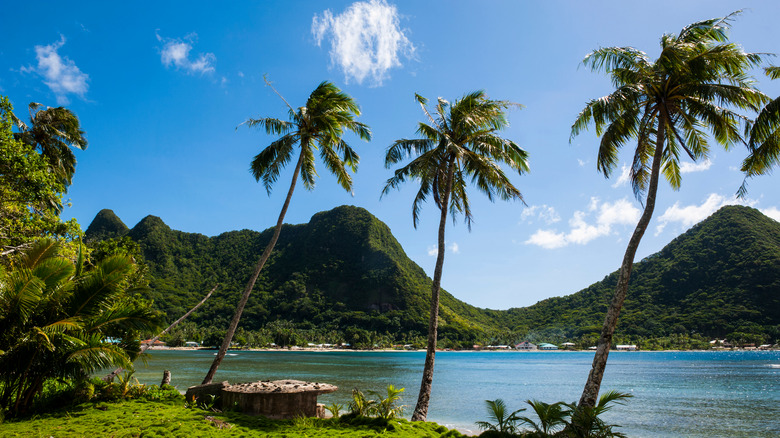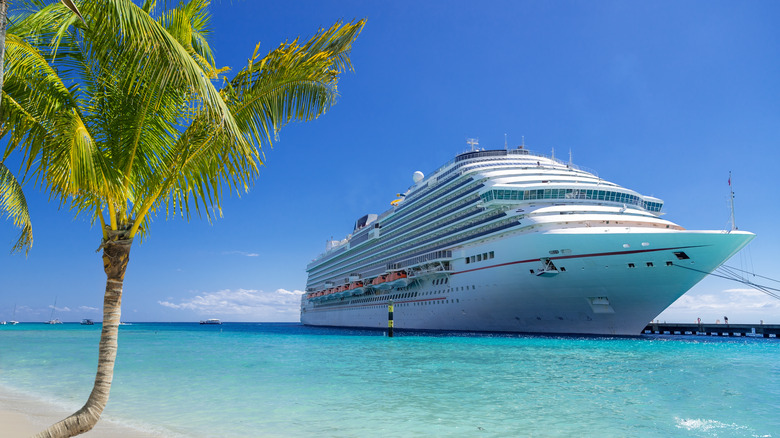Travel Guides Outdoor Adventures
SCStock/Shutterstock
Hilary I. Lebow
From lush rainforests to coral reefs teeming with life, the National Park of American Samoa is well worth a visit for its beautiful scenery and rich cultural heritage. Though it’s 5,000 miles from the continental states, American Samoa is officially a U.S. territory, spanning five inhabited islands in the South Pacific (yes, you’ll need a passport). The best time to visit is June to September, considered the cooler winter months for nations south of the equator. Though, to be fair, it’s hot, humid, and rainy all year round — truly a tropical paradise.
Samoa and American Samoa have been two distinct territories since 1900, following a civil war and battle for land between Germany and the U.S. Today, the neighboring islands still share “fa’asamoa,” the beliefs, customs, and respect for nature that have preserved Samoan culture for more than 3,500 years. Travelers are drawn to American Samoa for its unmatched beauty, remote beaches, and welcoming locals — the kind of timeless charm that can only be found in off-the-beaten-path destinations.
What to do in the national park

Danita Delimont/Shutterstock
The National Park of American Samoa comprises 9,500 acres across three volcanic islands — Tutuila, Ta’ū, and Ofu — and an additional 4,000 acres underwater. Visitors can hike up rugged trails to dozens of waterfalls and panoramic vistas, perhaps spotting some of the 35 native bird species along the way. Diverse plants in this old-world rainforest offer a stunning backdrop at every turn, brought to life by pollinators like the endangered flying fox, one of the largest bats in the world with a three-foot wingspan.
Below the surface, things are just as interesting. Snorkeling enthusiasts can venture offshore into clear, warm waters and explore two coral atolls (ring-shaped coral reefs) still thriving despite human activities and powerful storms. Here, you’ll find 950 species of fish and 250 species of coral, notes the National Marine Sanctuary of American Samoa. Keep your eyes peeled for rare sea turtles and octopuses. From August to November, you may be able to spot Southern Humpback whales and their young migrating through the region.
Once back on dry land, enjoy a leisurely stroll along a deserted coastline, like Orfu Beach, which you may have seen in a travel magazine or two. The blanket of white sand framed by swaying palm trees and jungle-covered peaks form a quintessential postcard snapshot. Come nightfall, look up for unparalleled views of the Milky Way Galaxy. Samoa, which means “sacred earth,” certainly lives up to its name.
How to get to American Samoa

NAN728/Shutterstock
Travelers can reach American Samoa by plane or cruise ship. Hawaiian Airlines offers a six-hour direct flight from Honolulu International Airport (HNL) to Pago Pago International Airport (PPG) twice a week, ranging from $640-$1100 for a round trip ticket, at time of writing. Hawaiian Airlines is currently the only major airline offering international flights to American Samoa. Samoa Airways, ferry companies, and fishing boats offer transport between the islands.
While no cruises were allowed to dock at the Pago Pago Harbor in 2021 and 2022 due to the COVID-19 pandemic, the port is now back in action, according to the American Samoa Visitors Bureau (ASVB). The popular destination is served by a ton of cruise lines, including (but not limited to) Carnival, Celebrity Cruises, Oceania Cruises, Princess Cruises, Regent Seven Seas, Royal Caribbean International, Seabourne, and Silversea. In October 2023, the Disney Cruise Line will sail to American Samoa for its maiden voyage on the Disney Wonder ship.
American passport holders can stay in the country for 30 days without a visa, per the U.S. Department of the Interior’s Office of Consular Affairs. To enter the country, all you’ll need is a valid passport for the duration of your stay and proof of your departure ticket. The country has a Level 1 travel advisory (the lowest possible) from the U.S. Department of State, which means it’s safe to travel there with normal travel precautions and common sense.

